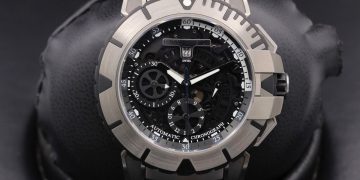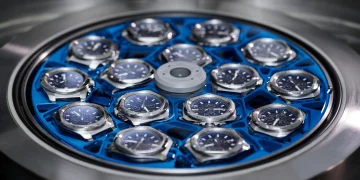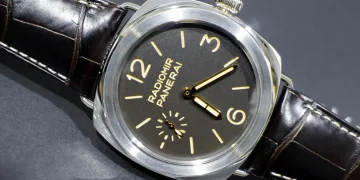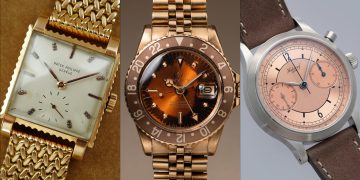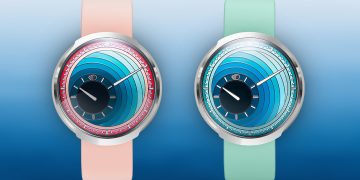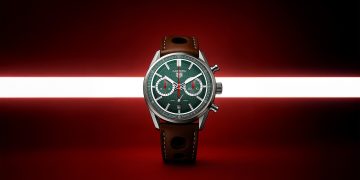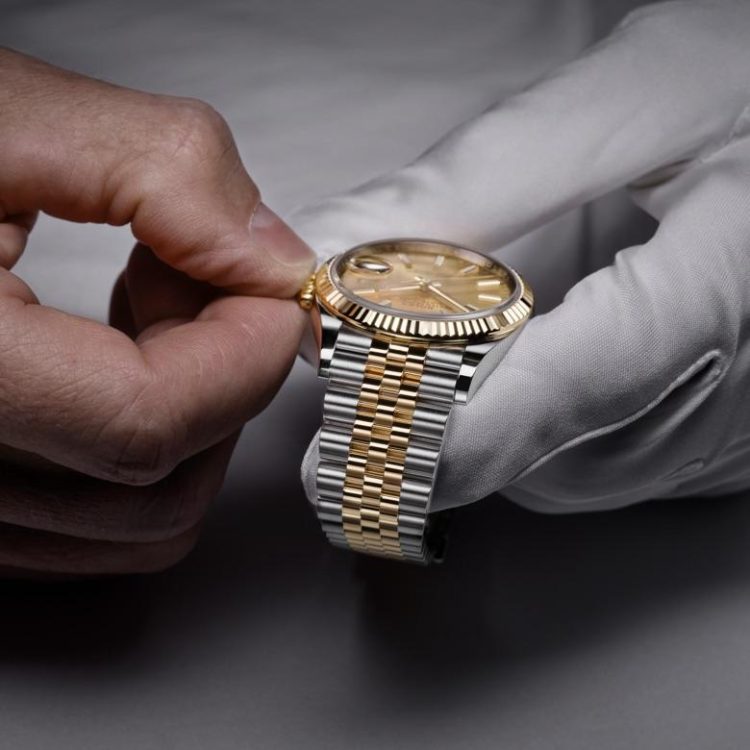Introduction:
A watch is not just a functional tool but also a valuable investment. Whether it’s a luxury mechanical watch, a stylish quartz timepiece, or a rugged sports watch, your timepiece deserves careful handling to maintain its longevity and appearance. Watches, especially high-end models, are susceptible to various forms of damage, and it’s essential to know how to protect them from daily wear and tear.
In this article, we’ll provide you with practical tips and advice on how to avoid unnecessary damage to your watch in everyday situations, ensuring it continues to function perfectly and retain its aesthetic charm for years to come.
1. Properly Store Your Watch When Not in Use
1.1 Keep Your Watch in a Safe Place
When you’re not wearing your watch, it’s essential to store it in a safe, secure location. Improper storage can lead to scratches, dust accumulation, and exposure to moisture or extreme temperatures, which could damage both the movement and the exterior of the watch.
- Use a Watch Box: Store your watch in a protective watch box or case that keeps it away from dust, dirt, and potential scratches. If the watch has a leather strap, ensure it’s stored in a dry, cool place to avoid moisture damage or deterioration.
- Watch Winder: For automatic watches, consider using a watch winder to keep the movement running when you’re not wearing it. This can help preserve the lubricants inside the movement and prevent the watch from stopping.
1.2 Avoid Storing in Humid Areas
Exposing your watch to high levels of humidity or moisture can result in rust or damage to the movement, even if it’s a water-resistant watch. Avoid storing your watch in bathrooms or near heating vents where the air might be too damp or too dry.
2. Be Mindful of Water Exposure
While many modern watches come with water-resistant ratings, not all watches are designed to withstand water exposure, and even water-resistant models can suffer damage if improperly used.
2.1 Know Your Watch’s Water Resistance
Understanding the water resistance rating of your watch is crucial. Common ratings include:
- 30 meters: Splash-resistant. Avoid water exposure.
- 50 meters: Can handle light splashes or rain.
- 100 meters and above: Suitable for swimming or diving (always check specific brand guidelines).
- Waterproof is a Misnomer: No watch is truly “waterproof.” Over time, the gaskets and seals that protect your watch from water can degrade, so even a water-resistant watch should be checked regularly, especially if it’s exposed to water frequently.
2.2 Avoid Wearing While Swimming or Showering
Even if your watch is rated for water resistance, wearing it during activities like swimming or showering can expose it to soap, chemicals, and chlorine that can damage the materials or the seals. Always rinse the watch with clean water if it gets wet and dry it off gently with a soft cloth.
3. Protect Your Watch from Impact and Scratches
Wearing your watch in rough environments or engaging in physical activities without proper care can result in scratches, dents, or other forms of damage to both the case and the crystal.
3.1 Avoid Activities with High Impact
Wearing your watch during high-impact activities, such as contact sports, gym workouts, or heavy lifting, can subject it to sudden shocks that may damage the internal components or cause the watch to lose its accuracy.
- Be Cautious During Physical Work: If you’re working with heavy tools or machinery, it’s best to remove your watch to avoid any accidental knocks or bumps that could cause internal damage or scratch the surface.
3.2 Be Mindful of Hard Surfaces
Be cautious when your watch comes into contact with hard surfaces, such as countertops, walls, or furniture. Even a minor bump can cause dents or scratches on the case or bracelet.
- Avoid Scratching the Crystal: Be especially mindful of the crystal, as scratches can obscure the dial and affect the clarity of the time. Consider using a protective film for the crystal if you’re worried about potential damage.
3.3 Protecting Your Watch from Chemicals
Certain chemicals, such as perfumes, cosmetics, and household cleaning products, can damage your watch’s materials. Leather straps can get stained or damaged, and metal cases or bracelets may tarnish if exposed to harsh chemicals.
- Keep Chemicals Away: Always remove your watch when using hair products, perfumes, or cleaning chemicals. Also, avoid exposing the watch to excessive saltwater or chlorine, especially if it’s not rated for diving or water sports.
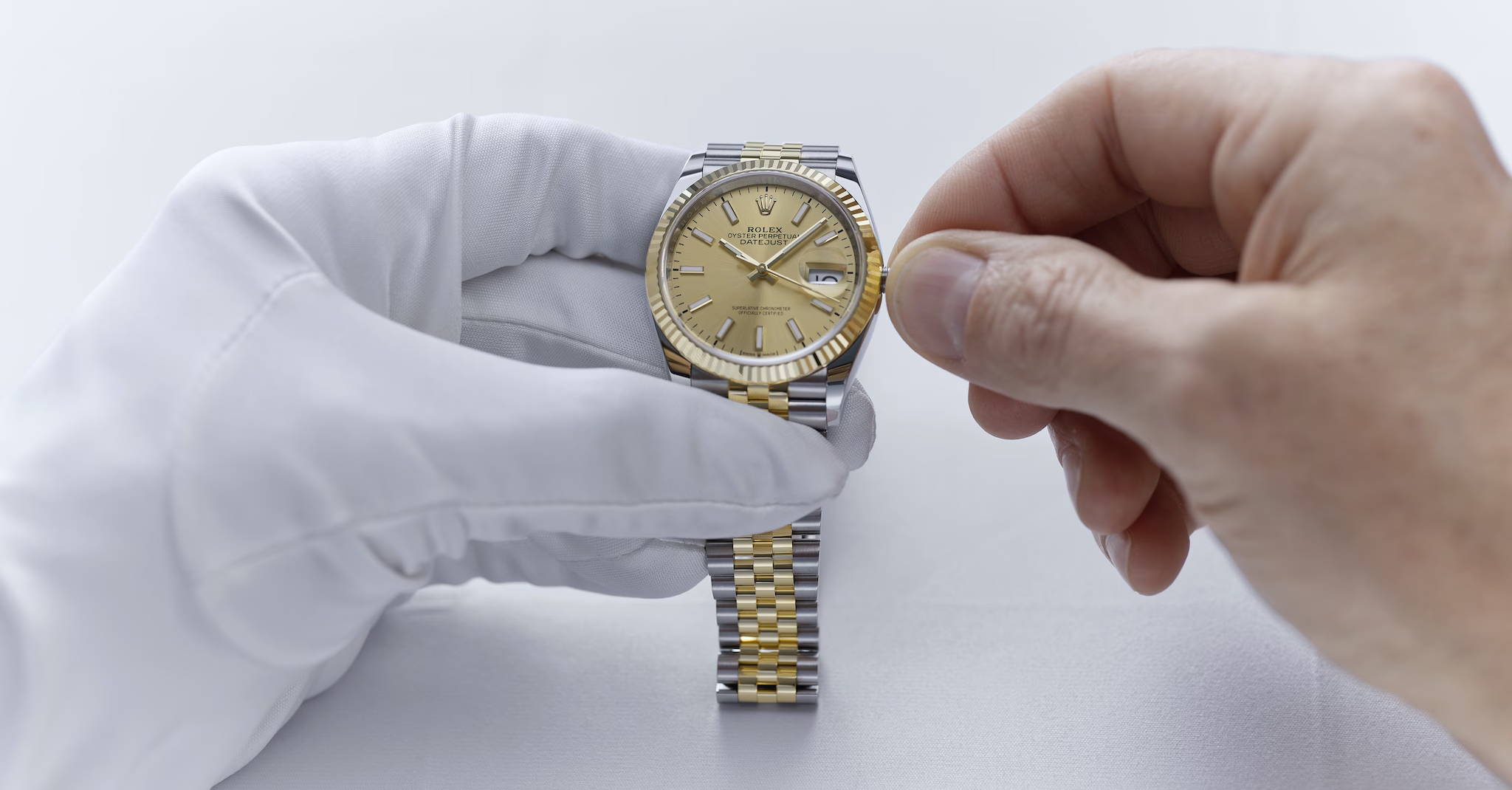
4. Be Careful with the Watch’s Crown and Pushers
The crown (used for winding the watch or setting the time) and the pushers (found on chronograph watches) are delicate components that require careful handling.
4.1 Avoid Over-tightening or Pulling the Crown
While it’s important to screw down the crown tightly to maintain the water resistance of your watch, avoid over-tightening it, which can cause the crown’s threads to wear out. Also, be sure to always push the crown back in after setting the time to prevent any moisture or dirt from getting inside the case.
4.2 Don’t Use Pushers Under Water
If your watch has pushers for controlling chronograph functions or other features, never press them while the watch is underwater or exposed to moisture, as this can damage the seals and allow water to seep inside.
5. Be Careful with Temperature Extremes
Extreme temperatures, both hot and cold, can affect your watch’s functionality and longevity.
5.1 Avoid Extreme Heat or Cold
Exposing your watch to extreme heat or cold can cause the materials to expand or contract, potentially leading to damage or malfunction. For example, leaving your watch in a hot car or near a heat source can cause the internal lubricants to dry up or the movement to malfunction.
- Cold Weather: Extreme cold temperatures may cause the watch’s lubricants to freeze or slow the movement down. While this is generally less of a concern for high-end watches, it can still affect the accuracy or overall performance.
5.2 Regular Checks for Gaskets
The gaskets and seals that provide water resistance in your watch may weaken over time due to exposure to extreme temperatures. If you’re using your watch in extreme environments, it’s wise to have the seals checked regularly.
6. Regular Servicing and Maintenance
Even with the best care, watches need regular maintenance to ensure that their components are functioning correctly and that no hidden issues are brewing.
6.1 Follow the Manufacturer’s Maintenance Schedule
Different types of watches require different servicing intervals. For mechanical watches, it’s generally recommended to service the watch every 3-5 years, while quartz watches may need servicing less often.
- Watch Servicing: Regular maintenance ensures that the movement is cleaned, lubricated, and adjusted for optimal accuracy. It also helps identify any potential issues before they lead to major repairs.
6.2 Be Aware of Wear on the Strap
Over time, watch straps, particularly leather and fabric bands, can wear down. Leather can crack or discolor, while metal bracelets can stretch or lose their shine. It’s a good idea to inspect the strap regularly for signs of wear.
- Replacing Worn Straps: If you notice that the strap is fraying, cracking, or showing significant wear, consider replacing it to keep the watch looking fresh and to ensure comfort.
Conclusion:
Taking care of your watch in daily wear doesn’t have to be difficult, but it does require some attention and awareness. By following these simple yet important steps, you can significantly reduce the risk of unnecessary damage to your watch, whether it’s from scratches, moisture, impact, or chemical exposure. Proper care will ensure that your watch continues to look great, perform accurately, and remain a reliable companion for many years to come.
Remember, a well-maintained watch not only performs better but also retains its value and aesthetic appeal, making it a worthwhile investment for the future. So, take the time to protect your watch, and it will reward you with years of reliable service and timeless style.



